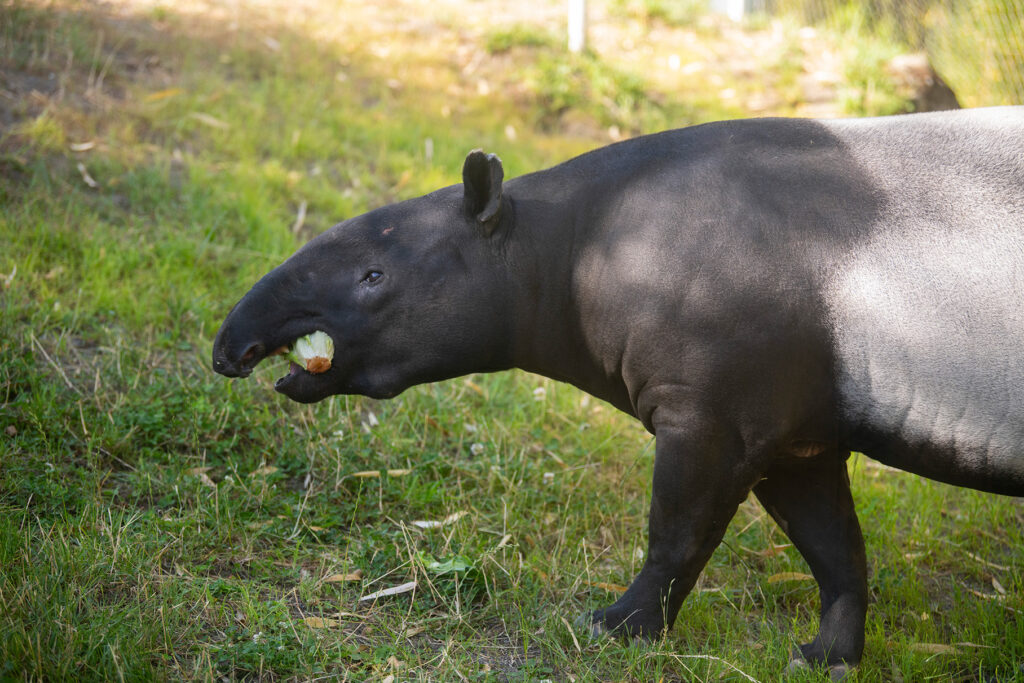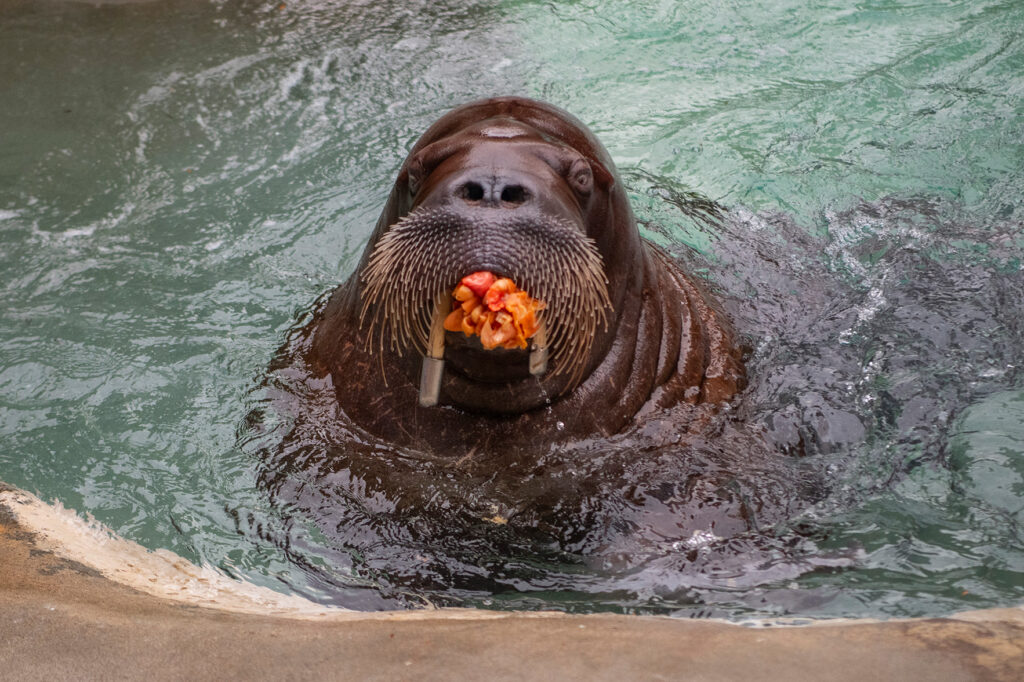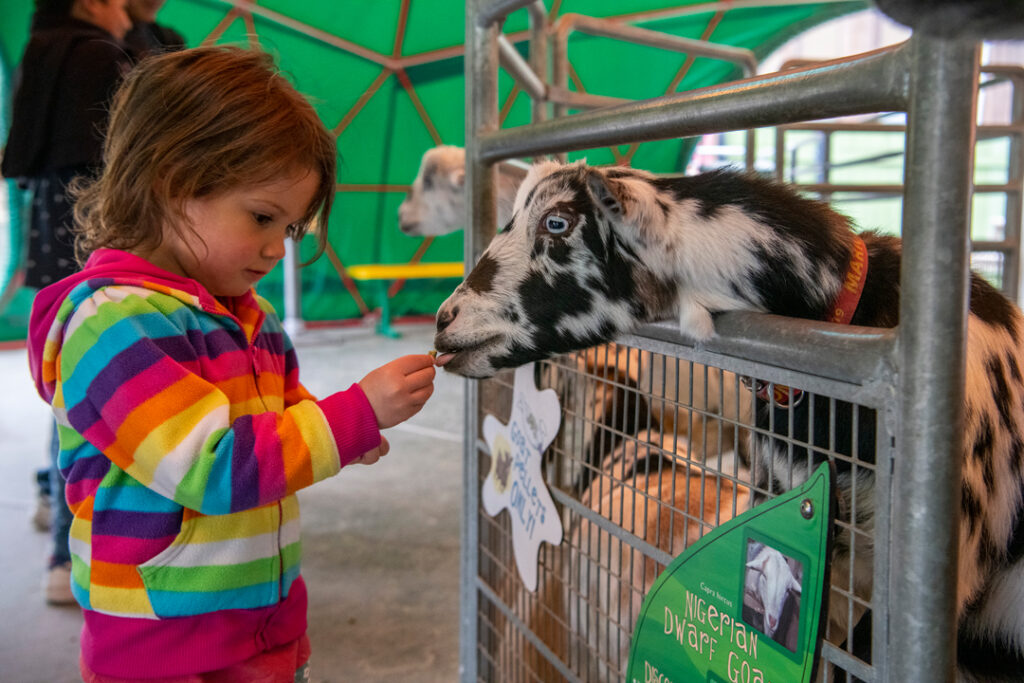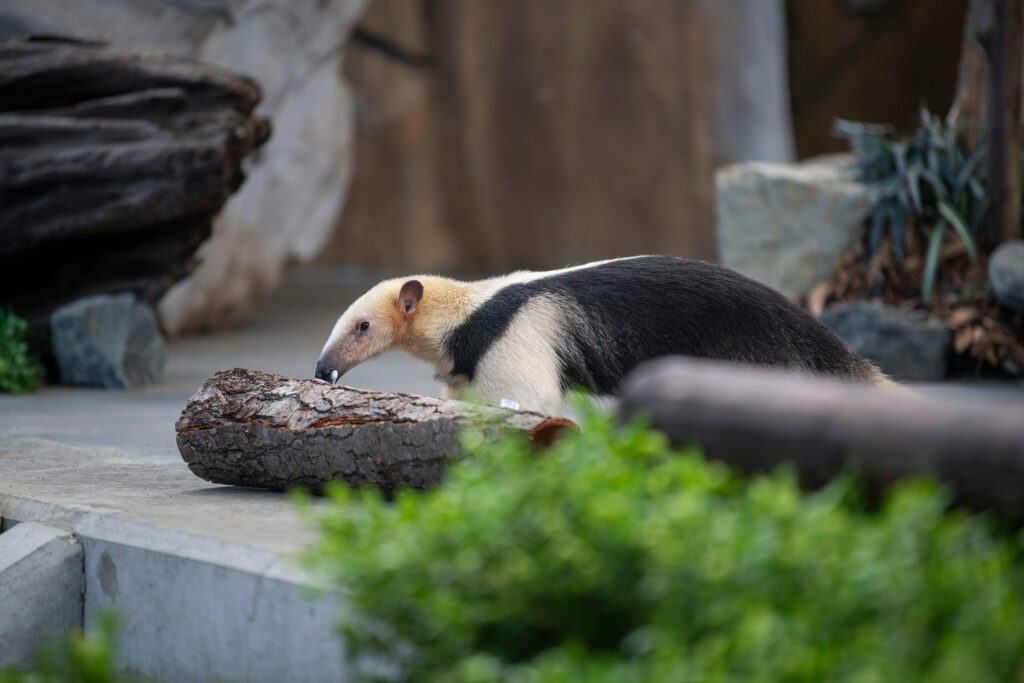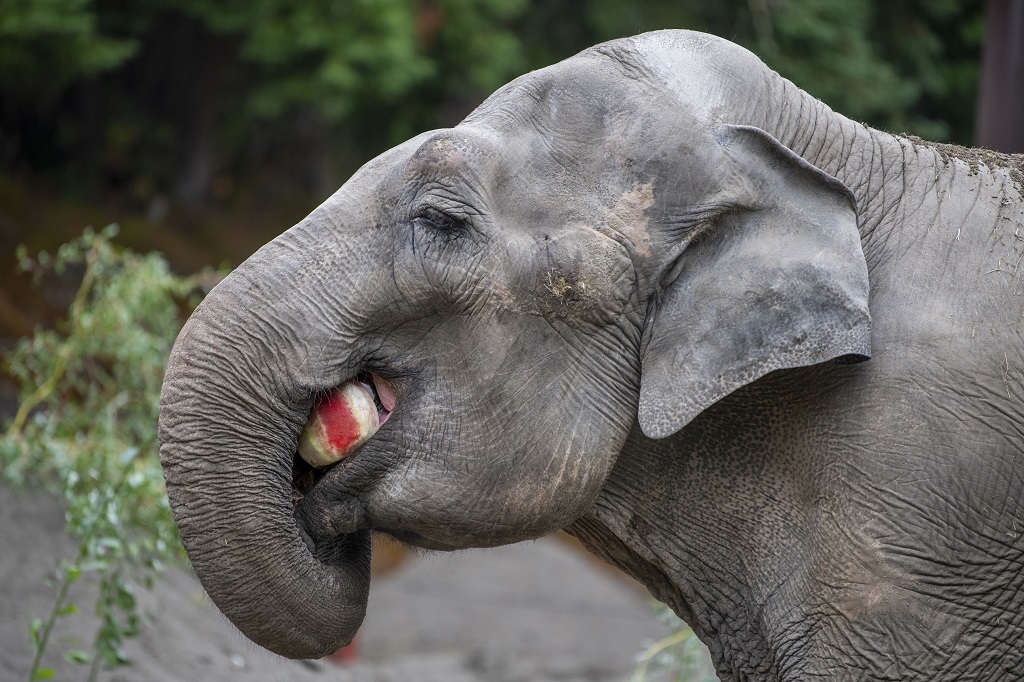It takes many tons of food to feed the more than 12,000 animals that live at Point Defiance Zoo & Aquarium. For example, zoo staff prepare 133,000 pounds of seafood per year. That’s one of many fascinating facts about feeding an entire zoo and aquarium.
Asian Forest Sanctuary
Most food consumed in a day:
In the Asian Forest Sanctuary, where guests can see animals like Sumatran tigers, lar gibbons, and siamangs, the Malayan tapirs eat the most. Tapirs Baku and Yuna are herbivores and eat 12 heads of romaine and 17 pounds of produce daily. They also are free-fed timothy hay and consume around 6 pounds of it a day.
In comparison to their body weight, Asian small-clawed otters Javin and Arista consume the most food: about 20-25% of their body weight every day due to their high metabolisms, lifestyle, and temperature regulation from being in the cold water. They weigh around 12 pounds and eat about 3 pounds per day. They eat a variety of fish, shrimp, wet and dry cat food, and worms.
Most interesting menu item:
“The lar gibbons and siamangs get protein daily,” said assistant curator Erin. “Often, I hear people say they think primates are strict herbivores, but they are omnivores. They eat everything from eggs, chicken, and insects to seeds and nuts.”
Food preparation:
Each day, keepers prepare 75 pounds of food for the animals in the Asian Forest Sanctuary. In addition, the herbivores are fed 550 pounds of browse (edible vegetation like twigs, branches, and leaves) and 2,145 pounds of romaine a year.
Pacific Seas Aquarium
Most food consumed in a day:
In the Pacific Seas Aquarium, the hammerhead sharks and Rayna the eagle ray take home the title for most food consumed in a day: just over 3 pounds daily.
The aquarium staff like to joke that they are not only the hammerheads’ caretakers but also their personal chefs.
“We prepare mahi, herring, capelin, and squid for the hammerheads daily,” said staff biologist Tai. “We make sure the presentation looks nice too and cut up their food for them in diamond shapes.”
The hammerheads aren’t THAT picky that they prefer their food cut up in a particular way. Tai says aquarists do it because it’s easier to insert vitamins and supplements inside that diamond shape and for the sharks to swallow.
Meanwhile, you can’t miss Rayna the ray. Her wingspan is 6.2 feet wide. From nose to tail, she’s 13 feet long, and she weighs 180 pounds. It’s no wonder she is among the top consumers. Rayna enjoys herring, mahi, capelin, squid, propeller clam, and other seafood.
Most interesting menu item:
“Aside from the Giant Pacific Octopus’ normal diet of crab, herring, clam, and shrimp, we also offer them various items to keep them stimulated,” said staff biologist Mark. “That includes raw chicken, hard-boiled eggs, Spam, pork, and various smelly cheeses such as blue cheese.”
Food preparation:
Of those 133,000 pounds of seafood mentioned earlier, 20,410 go to the aquarium. In addition, aquarium staff also prepare flakes and pellets, lobster, halibut, and brine shrimp on an as-needed basis.
Rocky Shores & Arctic Tundra
Most food consumed in a day:
Walruses Balzak and Lakina eat the most in Rocky Shores by a long shot. Balzak eats 120.5 pounds daily, while Lakina eats 62 pounds. They eat a mixture of herring, capelin, squid, propeller clam, krill, shrimp, and mussels. Keepers weigh each item out separately before feeding the walruses.
Most interesting menu item:
“Polar bears are lipivores, meaning they are fat eaters,” said staff biologist Noelle. “In the wild, polar bears survive off seal blubber. Here at the zoo, we give them fat to supplement their diets, along with seafood and vegetables.”
Noelle also said the sea otters receive Dungeness crab daily. The sea otters consume portions of crab shells and the shells aid in their digestion.
Food preparation:
During the winter, keepers prepare about 300 pounds of seafood each day for the animals in Rocky Shores.
“All the seafood we feed our marine mammals is restaurant quality,” said Noelle.
KIDS’ ZONE
Most food consumed in a day:
You might be able to guess who is eating the most in Kids’ Zone regarding volume. Yep, the goats! They eat multiple flakes of timothy hay and many, many cups of timothy pellets per day.
But, if we’re talking about the ratio of body size to the amount of food, the black-and-white ruffed lemurs have the goats beat. The lemurs need to consume a large amount of food to get the calories and nutrition required, mainly due to how food moves through their digestive tracts. They receive two types of biscuits (specially made for primates) and various amounts of greens, veggies, and fruits.
Most interesting menu item:
“Human-grade escargot!” said assistant curator Donovan.
It’s served to Clyde, the Savannah monitor lizard.
“He’s fancy,” added Donovan.
Food preparation:
Each week, the Kids’ Zone team prepares:
- 19 pounds of produce
- 65 pounds of proteins/meats
- Two bales of timothy hay
- 130 pounds of timothy pellets
- 65 pounds of biscuits and dry goods
“We also cook produce for our oldest lemur, so it’s easier for her to eat,” said Donovan. “And each species that lives in a group has food cut into a specific size for them to share with a group or consume more readily.”
Wild Wonders Outdoor Theater
Most food consumed in a day:
Behind the scenes at the Wild Wonders Outdoor Theater, Tahoma the bald eagle and Banyan the clouded leopard eat the most. Tahoma eats 1 ½ frozen rats and a small fish or four quail per day. Banyan gets around a pound of food daily: raw ground meat, chunks of steak and cooked chicken, and occasionally a knuckle bone or quail.
Most interesting menu item:
“Gonzo, the tamandua, eats apple cider vinegar banana cubes,” said assistant curator Maureen. “And Ari the raven likes real scrambled eggs and hard-boiled eggs but not egg whites from a carton.”
The tamandua, sloth, and opossum are all older and receive a gelatin cube daily to help promote their joint health.
Food preparation:
The Wild Wonders team prepares 17 pounds of food daily, which includes about 1,000 mealworms.
Suki the Asian Elephant
Of course, Suki, the Asian elephant, gets an entire section to herself! At 59, Suki is one of the oldest Asian elephants in the country and has already lived far beyond the median life expectancy of 47 for female Asian elephants in human care.
Keepers spend an hour each day prepping Suki’s food so it doesn’t need chewing and is easier for her to digest: thinly slicing and dicing her fresh fruit and veggies (20 pounds daily). Out of the nine different greens options Suki receives, the bok choy is her favorite. Elephants wear through six sets of teeth during their lifetimes, and Suki has appropriately worn through all of them. Suki’s hay (76 pounds a day) is pre-chopped and packed by the team into overnight feeders that offer her timed grazing (an elephant eats both day and night).
An entire zoo area is devoted to growing the trees that make great elephant munching: willow, maple, and banana leaves. In total, Suki enjoys 22 different fruits and vegetables. It’s all part of a healthy diet – with the occasional treat like a vegan apple pie or triple berry pie for her birthday.
Read more about Suki’s exceptional care.
